|
Rob Buchkowski, PhD Candidate I set-up an experiment this fall to examine the relationship between herbivores and detritivores. While they are generally separated in space, herbivores and detritivores can interact with each other indirectly through their shared interaction with plants. Herbivores clearly consume plants and therefore cause and respond to changes in plant abundance and diversity. Detritivores consume decaying material that originates largely from plants and influence the rate at which important nutrients are recycling and become plant available. Consequently, herbivores and detritivores may have strong effects on each other and the rest of the ecosystem even if they don’t interact directly. My experiment is designed to test these effects. The herbivore in my experiment will be the familiar red-legged grasshopper (Melanoplus femurrubrum) and the detritivore will be the red earthworm (Lumbricus rubellus). The basic plan is to combine these two species in a factorial design (nothing, worm, hopper, worm + hopper) and measure their impact on the soil, the plants, and nitrogen in the coming years. I am particularly interested in the impact of these animals on nitrogen cycling, because changes in nitrogen can cause major changes in the ecosystem as a whole. To manipulate earthworms and grasshoppers together I needed field cages that spanned above and below ground. While I had used buckets in my Masters to study herbivores and detritivores, I wanted to keep the soil belowground this time in order to maintain important microclimatic conditions, such as temperature and moisture. I decided to dig out holes for my cages in and replace the soil after installing a barrier to reduce earthworm movement. The barrier could then transition seamlessly into an aboveground cage to keep out the grasshoppers. To get enough replication, I needed at least 40 cages, so I decided to make 60 to be safe. The cages also need to be big enough to accommodate populations and grasshopper and worms and deep enough to keep the plant roots happy. While big cages were clearly desirable, I couldn’t make them too big because any increase in depth or circumference resulted in a third power increase in volume of soil I needed to move. I set the dimensions at 45cm in diameter and 40cm deep. With these decisions in place, my task became clear—dig out between three and four cement trucks worth of rock laden New England soil, mix the soil to try and reduce variability, and return it to the holes after removing large rocks and installing the cages. I built the cages out of a mixture of plastic garden fence, fiberglass window screen, and landscaping cloth. I was on my way to buy the steel garden fence we usually use for cage construction when I realized that electroshocking earthworms out of steel cages wasn’t a very good idea. I rented a Ditch Witch mechanical auger to handle the digging, which will probably be the best $300 I will spend during my PhD. Equipped with an 18” mechanical auger (~45cm), the Ditch Witch was able to drill about 10 holes in 20 minutes! This gave us lots of time to shovel the soil into buckets and cart it over to a pile next to the experimental plot. We also spent an unexpected amount of time digging out toaster-sized boulders to even out the bottom of the holes. Three to four times I had to forfeit the perfect lattice design of my experiment to what appeared to be oven-sized rocks. After moving the soil into a pile, we mixed it with the bucket attachment that came with our Ditch Witch. This was one of the most fun parts of the process as we all stood around taking turns flipping the soil and watching the sunset. The next week, I returned to the field site to install my cages and shovel the soil back into them. With the help of a new set of volunteers including Os, the work went quickly and soon all cages were filled. In the spring, I will return to Yale Myers to plant seedlings into the cages and begin my first campaign to remove the earthworms from the soil.
164 Comments
|
Archives
November 2019
Categories
All
|
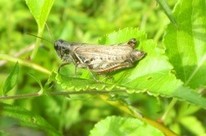
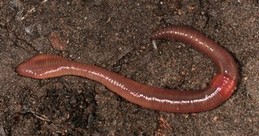
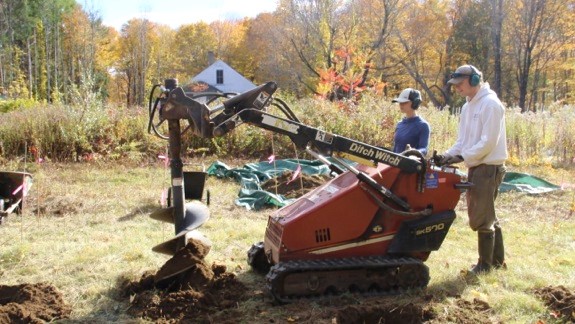
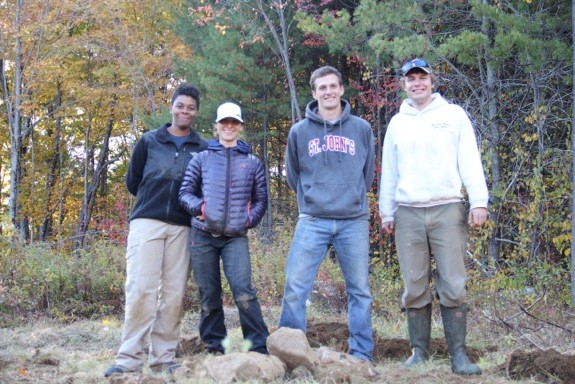
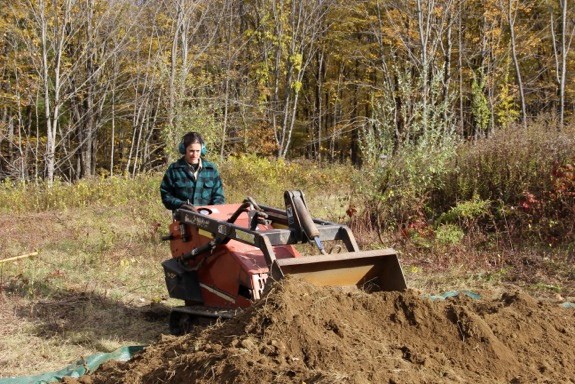
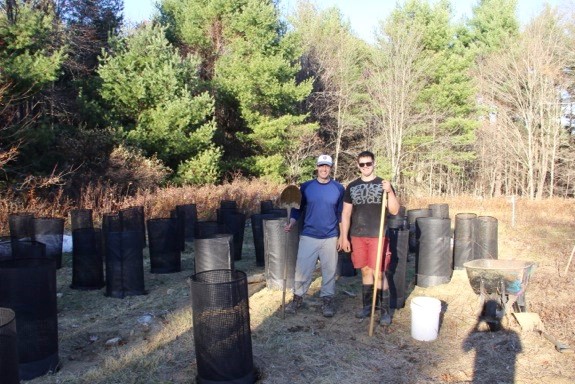
 RSS Feed
RSS Feed
